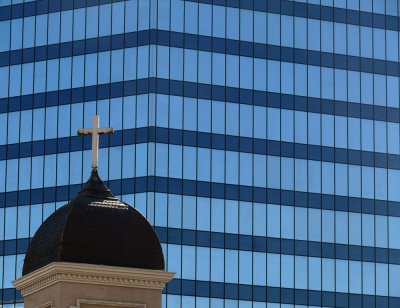Infrared Inspections of Spandrel Glass Panels
Sponsored by:

Infrared Inspections of Spandrel Glass Panels
Tip written by: Infraspection Institute
Thermal imaging is widely used to detect evidence of excess energy loss in building envelopes. Under proper conditions thermal imaging may be used to detect excess energy loss through spandrel glass panels.
Glass curtain walls are a common feature found on modern commercial buildings. Opaque glass panels called spandrels are used to cover materials or prevent construction elements from being viewed from the exterior of the building. Examples of such areas include areas between floors, hung ceiling areas, knee-wall areas below vision lights, and sometimes even columns or partitions.

Depending upon building construction, spandrel glass may be installed as single-thickness panes, as part of insulating glass units, or as laminated glass. When installed as single pane units, spandrel panels are often insulated to prevent excess energy loss; however, construction details will vary between systems.
When performing an infrared inspection of spandrel glass panels, keep the following in mind:
- Prior to the infrared inspection, ascertain building usage and construction. Be aware of HVAC settings and how they are likely to affect observed imagery.
- Spandrel glass panels can vary widely. Determine panel construction and characteristics prior to the inspection.
- When imaging from a building’s exterior, significant errors can be introduced by hot/cold reflections from nearby structures or the sky.
- Because spandrel glass often has a low emittance; detected exceptions are likely to have low temperature differentials.
Infrared inspections of spandrel glass should be performed during evening hours with an inside/outside temperature differential of at least 10ºC. Exceptions associated with spandrel glass may appear as hot or cold depending upon building usage, imaging vantage point, and panel construction. As always, detected exceptions should be investigated for cause and appropriate corrective measures taken.
Infrared inspection of building envelopes is one of the many topics covered in the Infraspection Institute Level I Certified Infrared Thermographer® training course. For more information or to obtain a copy of the Standard for Infrared Inspection of Building Envelopes, visit us online at Infraspection Institute or call us at 609-239-4788.
~ Tip suggested by Kevin Richardson
Advertisement

